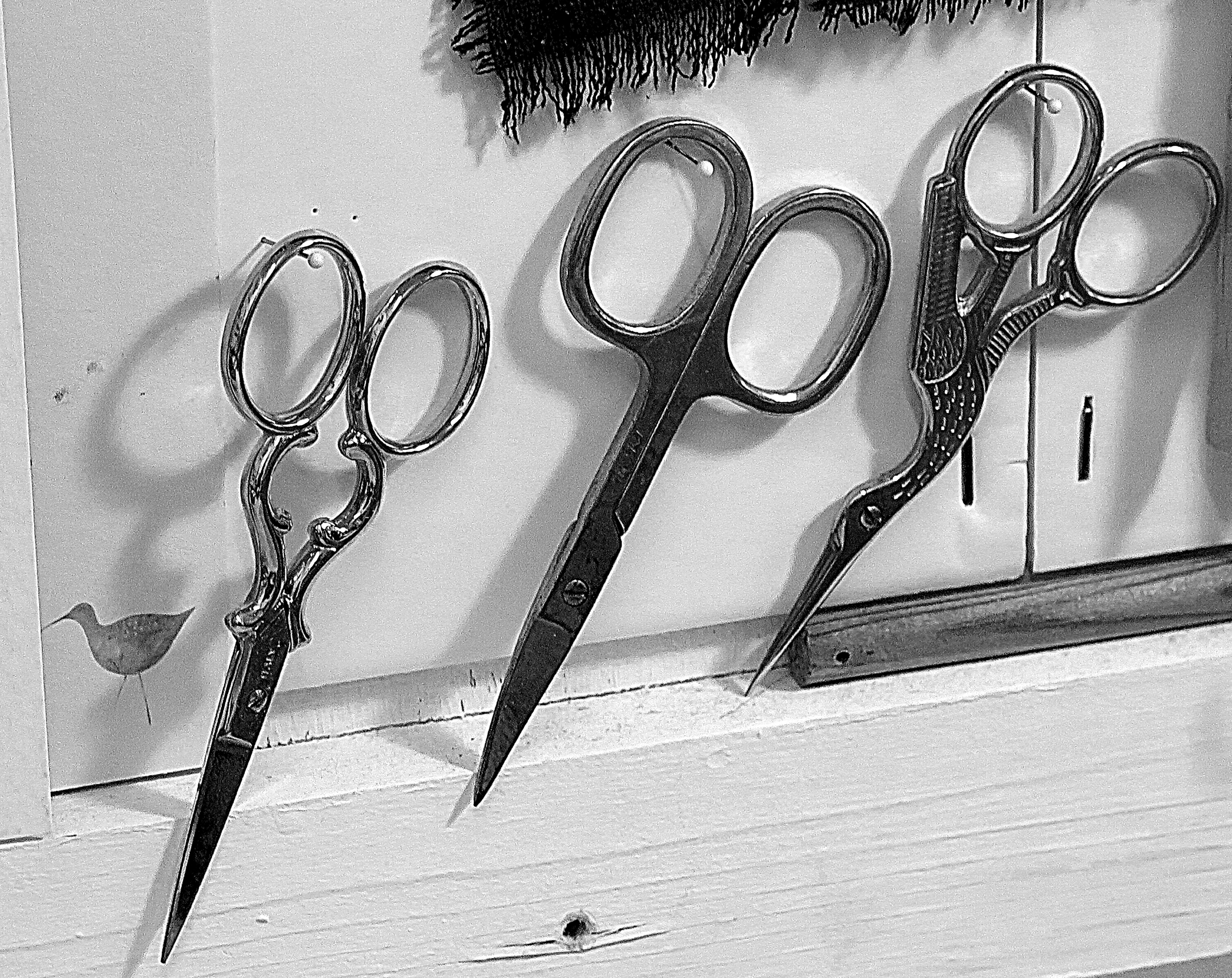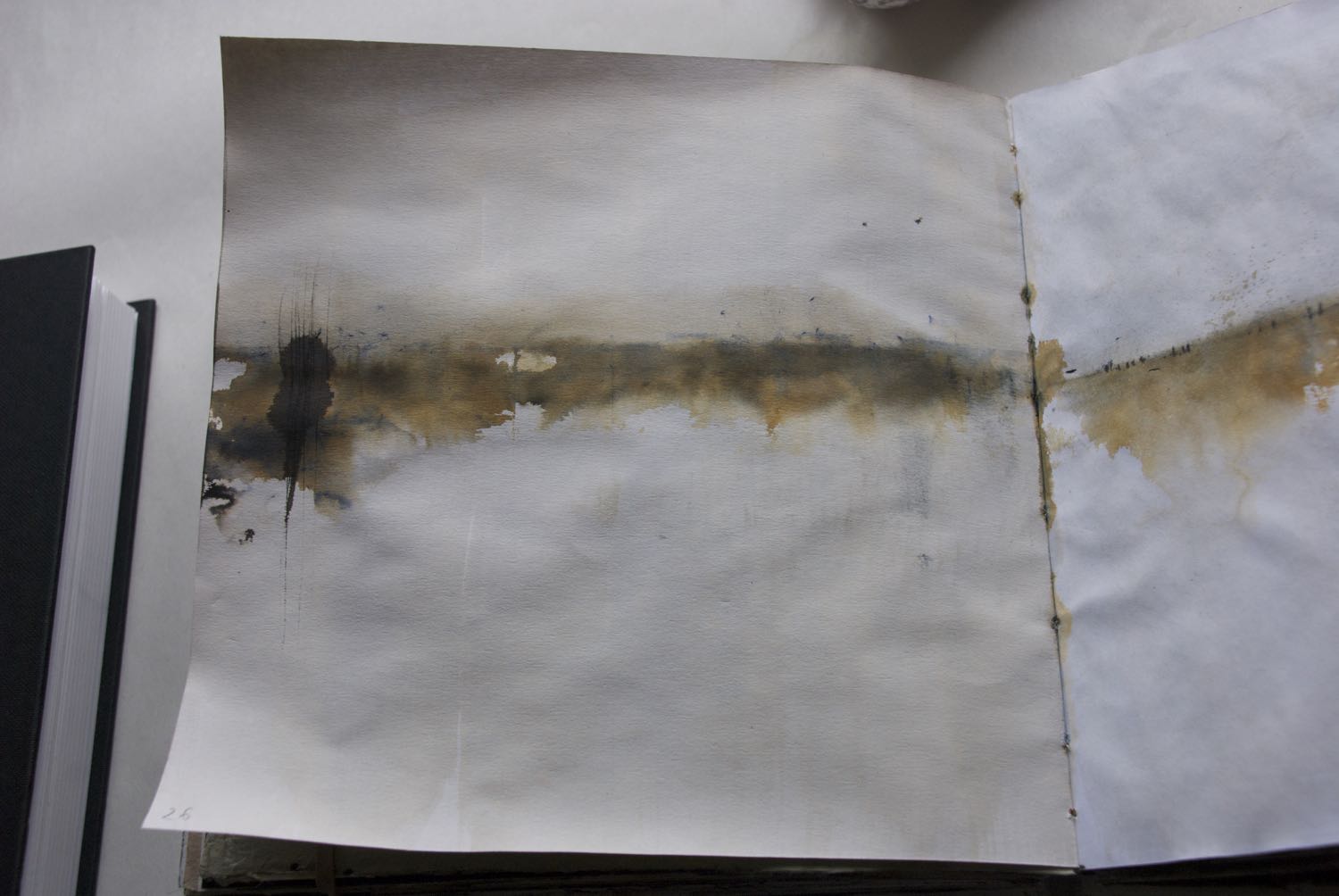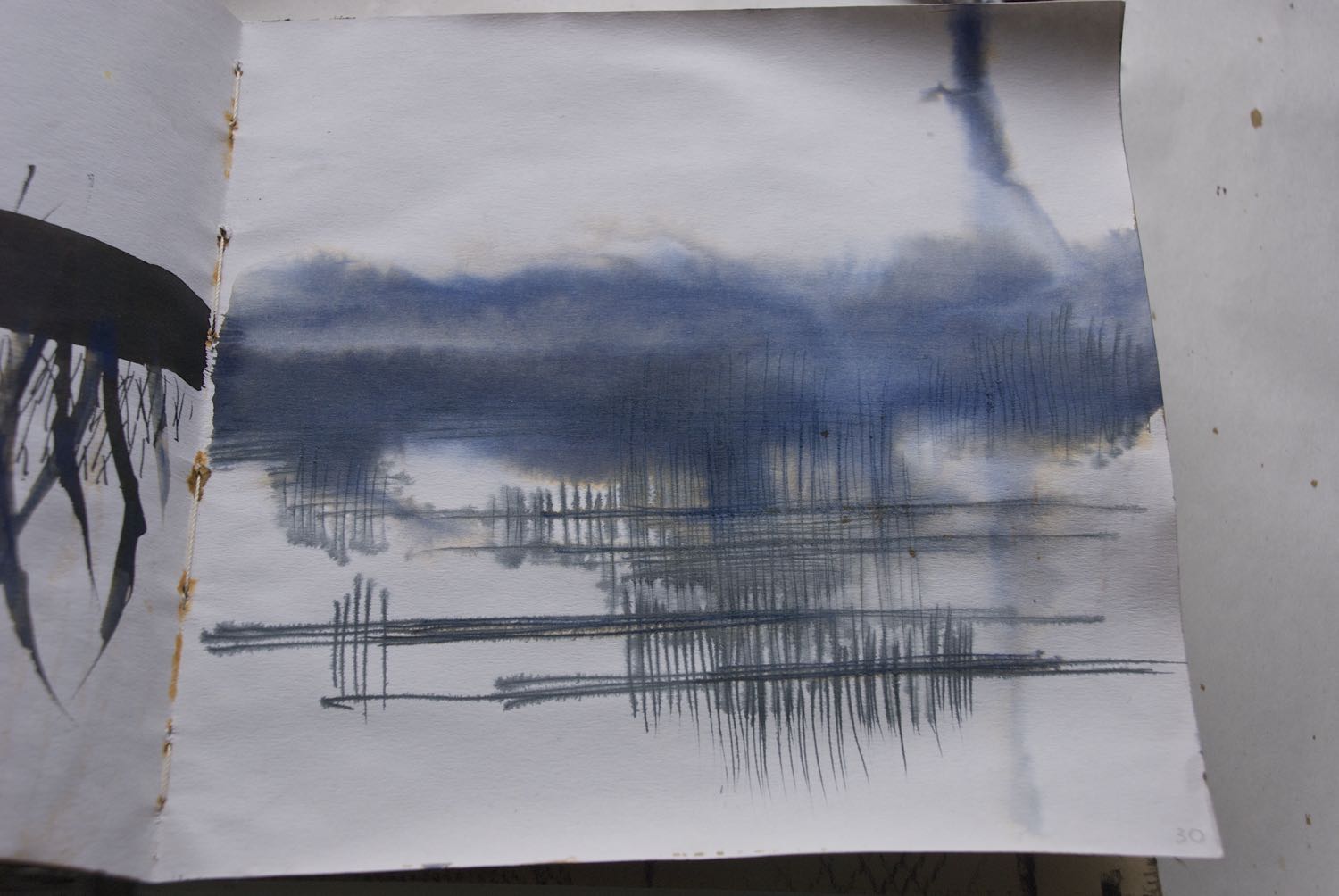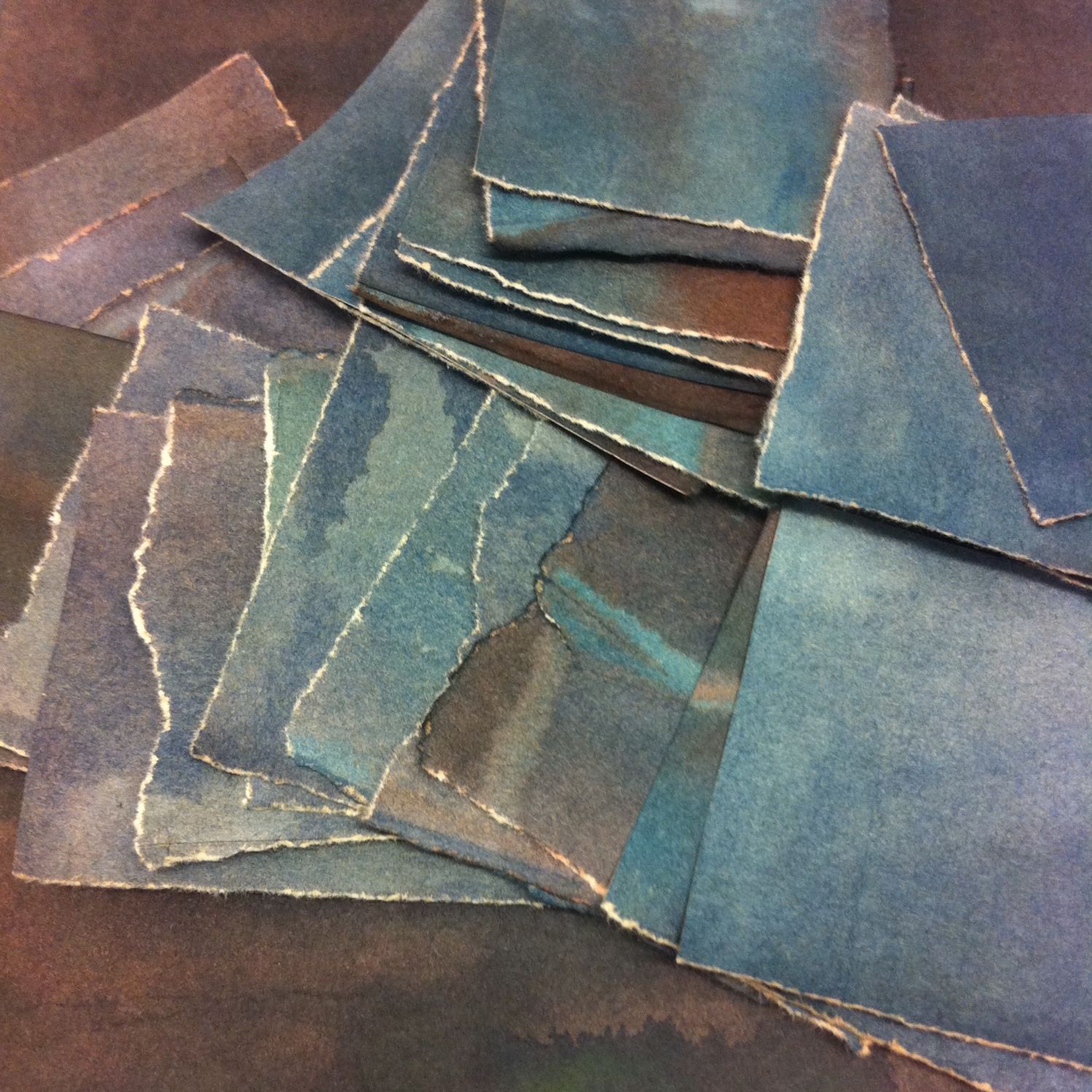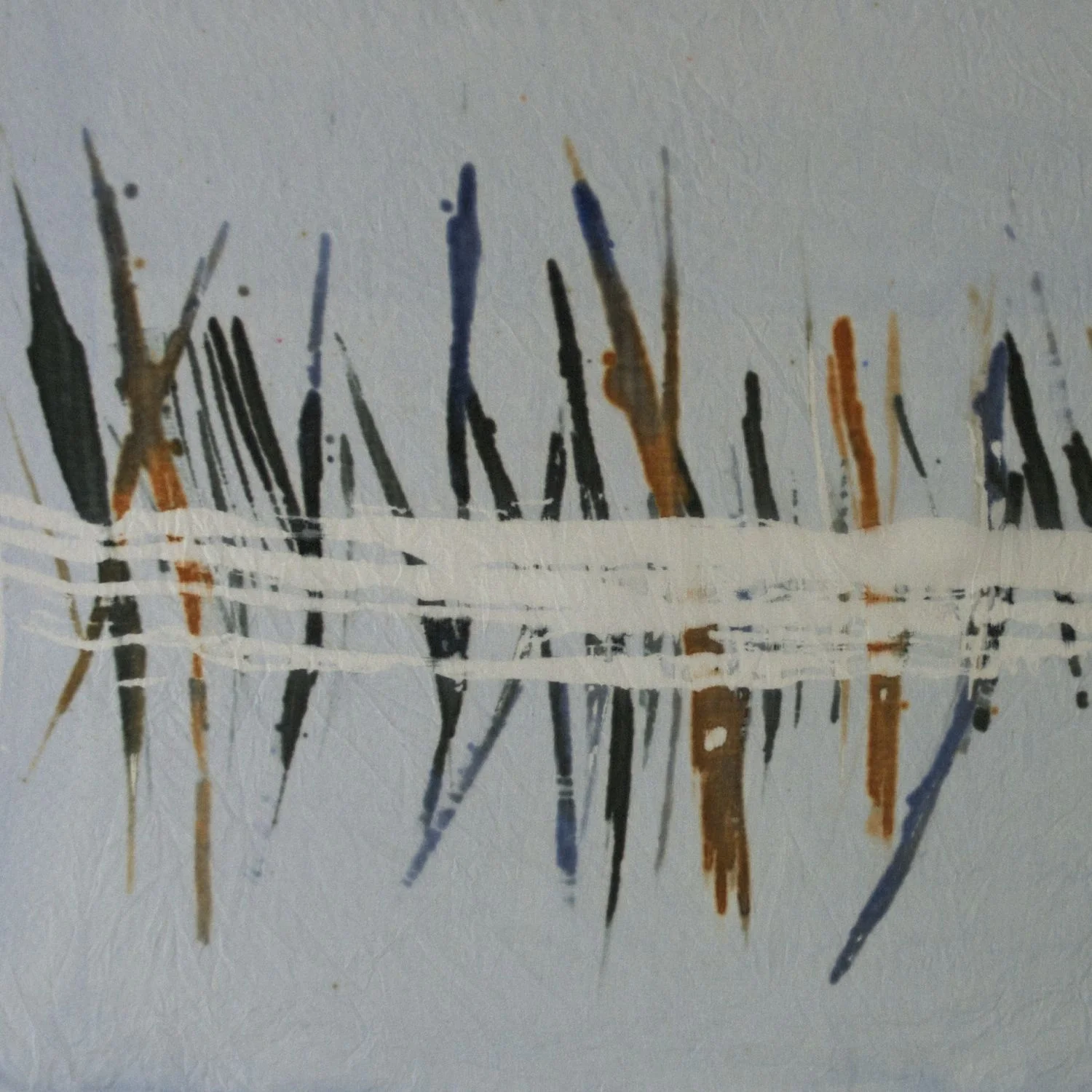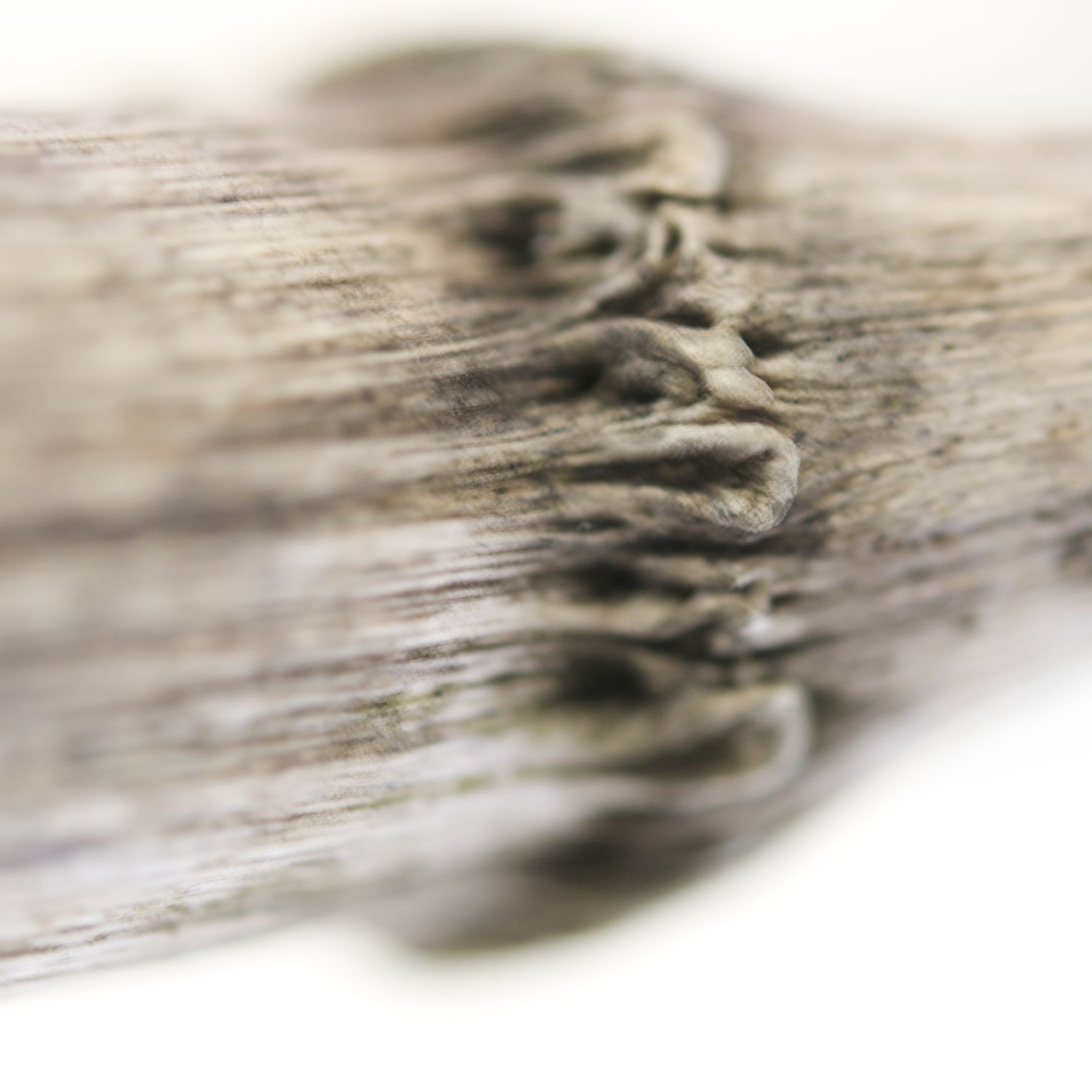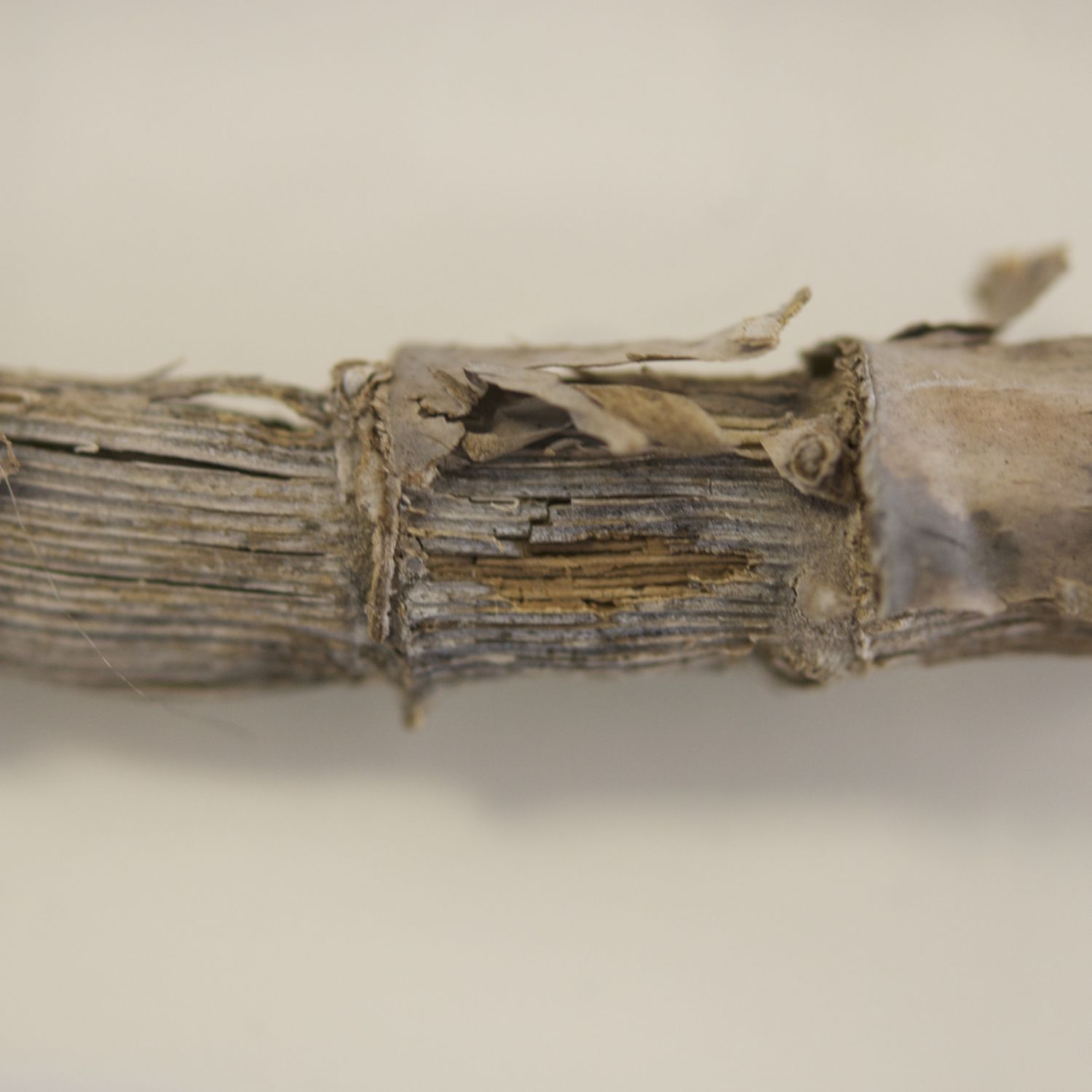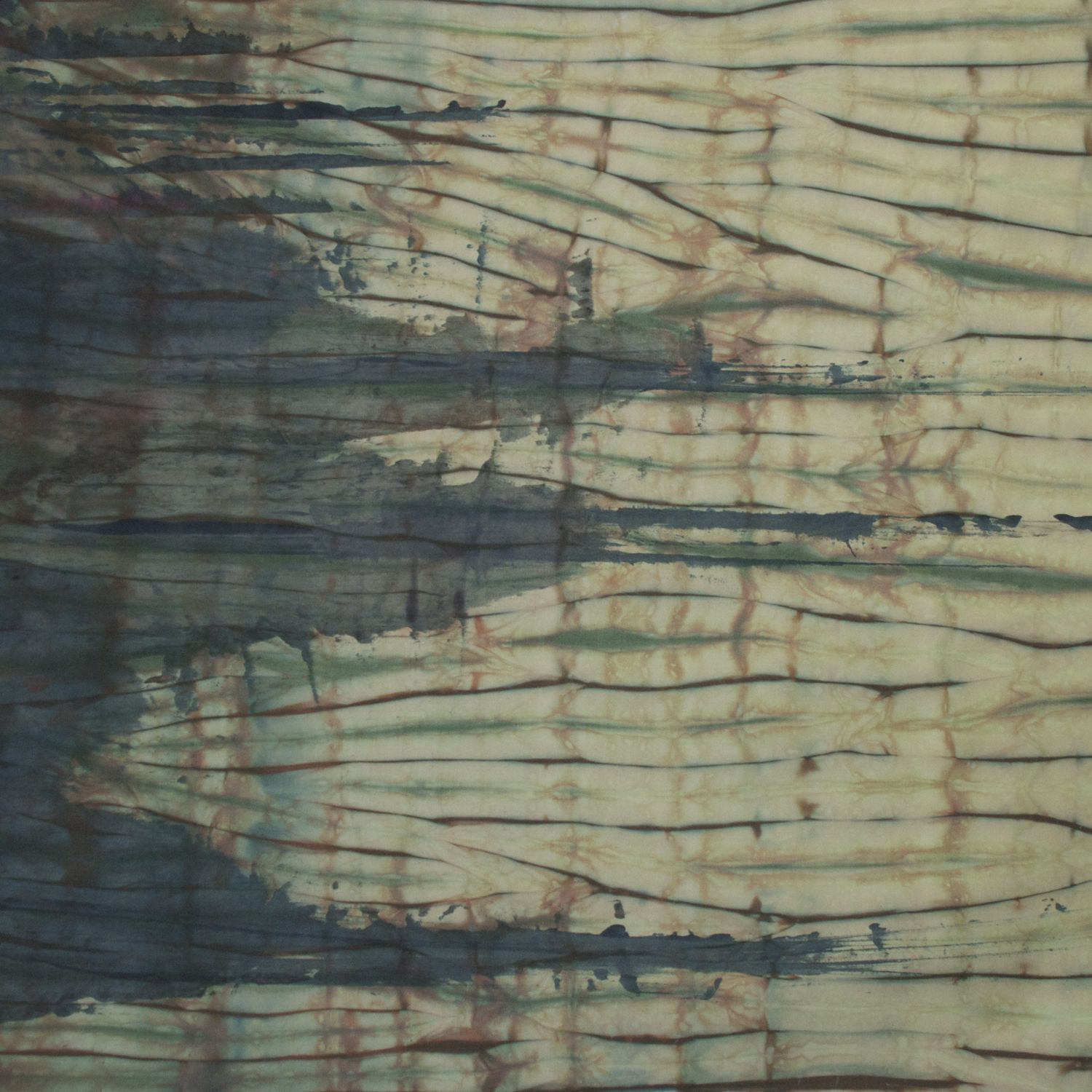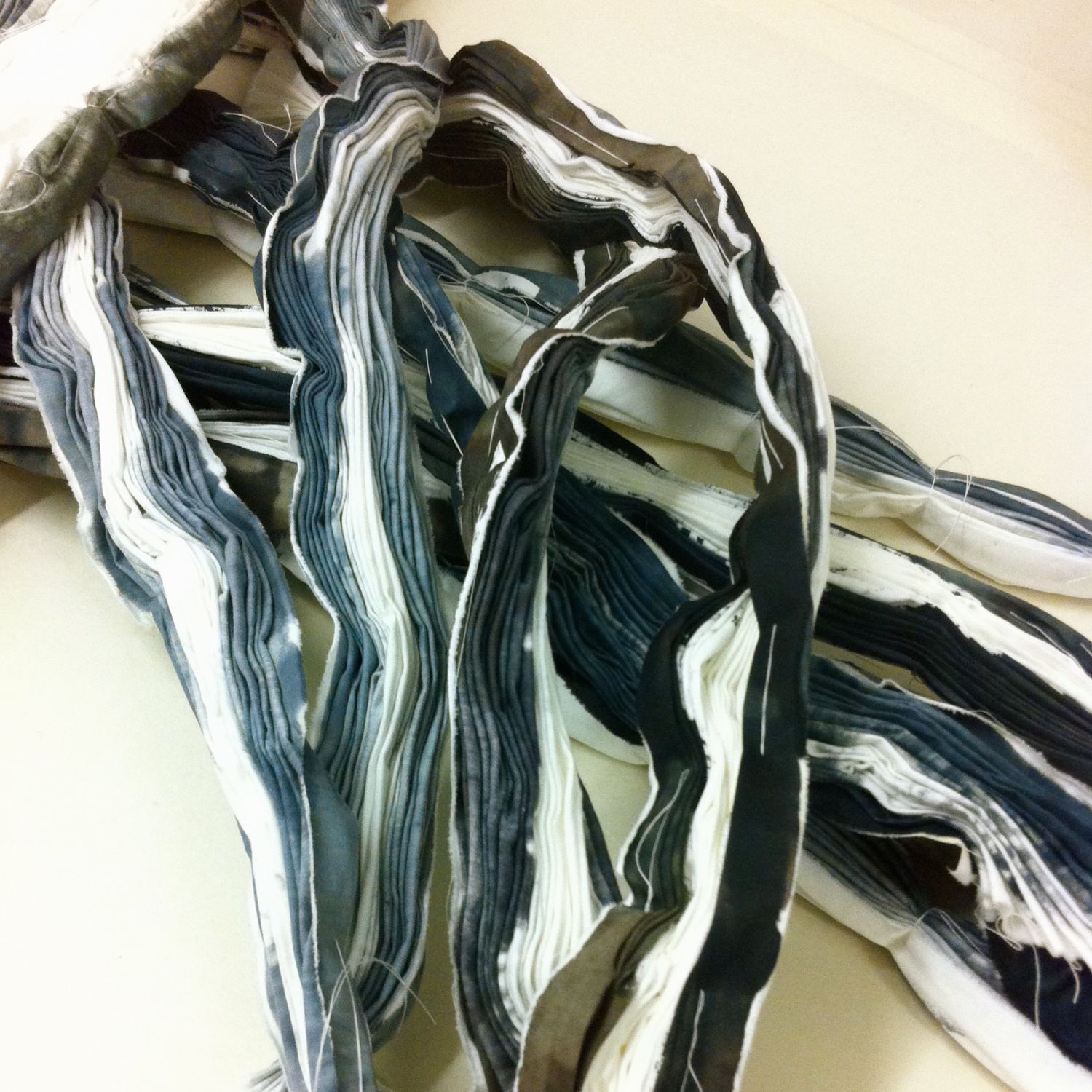I caught up with a friend this weekend who came to see me in my studio. Bronwyn happens to be a talented photographer ... and she brought her camera. It was fascinating to see the space through her eyes - I particularly liked some of the details she picked out:
My studio used to be our garage. It has no windows, just a door opening out into the garden. I have an inspiring view of one end of our hedge and not much else. No distractions! I have three main work areas - one for clean work (mainly stitching); one for wet work.
Wet area - tools and chemicals
Dye vats and cloth scraps
The third used to be for drawing, but that activity has now moved inside the house, so it is now general purpose ... but holds an ever-growing collection of found objects. These would take over if I let them ...
Every available space is used for storage - hand-built shelves and cupboards, plastic crates and Ikea. But I keep large areas of wall clear, covered with foam-core, to use as pin boards. I pin up work in progress, samples, photographs and drawings. There used to be a lot of images of other people's work for general inspiration, but I removed almost all of these. I prefer to have my own photographs - often cut up or edited - and drawings - so that the walls are now an extension of my sketchbook.
Lots to think about while I stitch
Stitching
All the photos in this post are by Bronwyn Oldham. Bronwyn's own work focuses on flowers - but not as you might normally imagine them. She portrays them as they age and wither, when the petals take on new textures and colours; and flowers and leaves shrink or distort into new forms. She makes you see how they are just as beautiful like this, if not more so. I particularly like the way the petals and leaves seem more cloth-like as they age.


